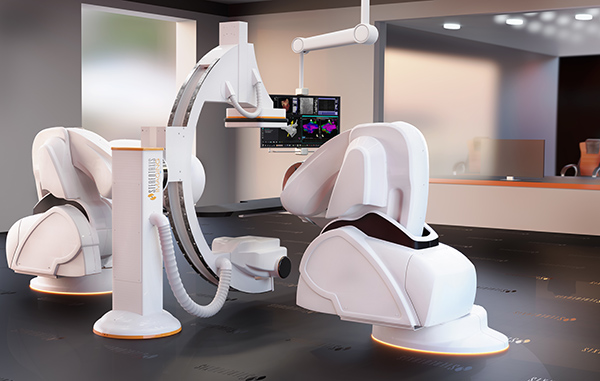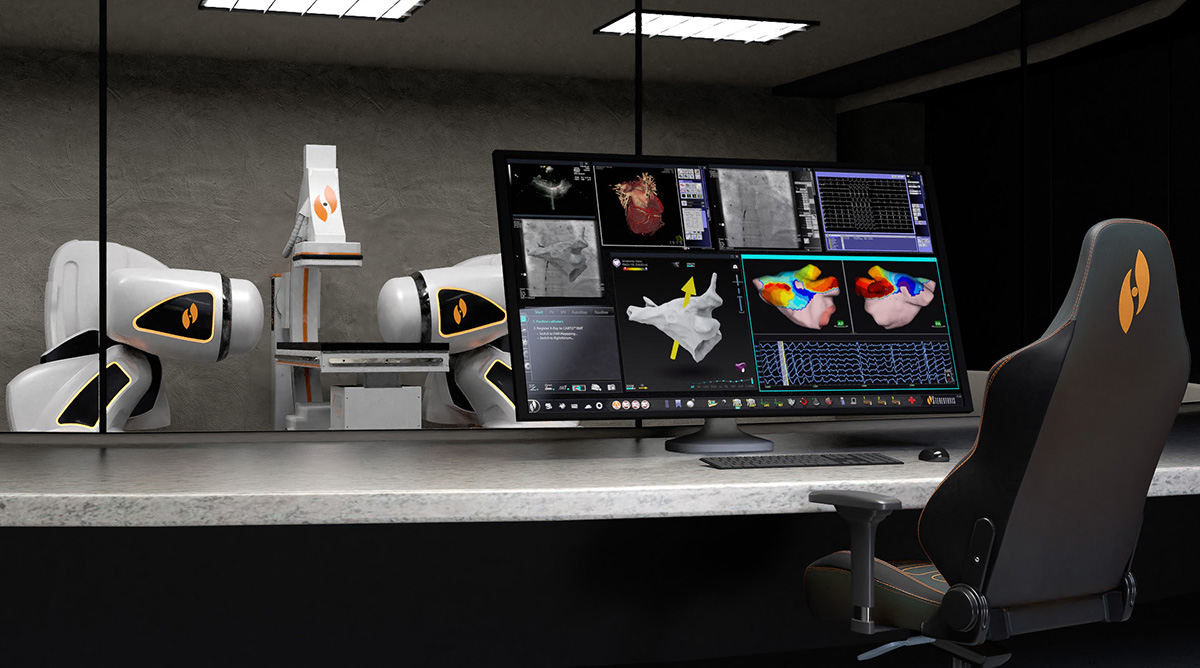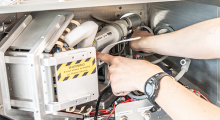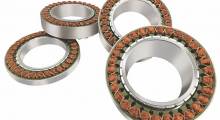Tens of millions of people worldwide suffer from arrhythmias, or abnormal heart beats. They can significantly increase the risk of stroke, heart failure, or sudden cardiac arrest. Cardiac ablation, which destroys small areas of tissue to treat arrhythmia, requires doctors to guide a catheter through delicate and critical areas. Stereotaxis Inc.'s Robotic Magnetic Navigation technology is designed to improve precision and safety, as well as to provide integrated procedural information.
The St. Louis, Mo.-based company said its Robotic Magnetic Navigation (RMN) technology has been used to treat more than 140,000 patients around the world. Stereotaxis has been improving its Genesis RMN system, said CEO David Fischel. “We've pushing hard on the path of innovation,” he said.
“We're in 100 hospitals worldwide, and use of our system has resulted in 72% fewer complications, 6% to 8% improved efficacy, and 35% less radiation exposure to staff between 2012 and 2020,” Fischel told Robotics 24/7. “Stereotaxis has gone through a few phases. There was excitement 15 years ago, and then slow progress. We're now rebuilding off that foundation and are creating more visibility beyond a core group of a couple hundred supportive physicians.”
Stereotaxis tackles surgical risks
“There are three broad categories of surgeries—open, laparoscopic, and endovascular—in terms from more to less invasive and risky,” Fischel explained. “Most surgical robots have focused on open, such as those from Stryker, Mako, Medtronic, and Mazor.”
“Endovascular is difficult because of delicate anatomy,” he said. “With catheters, control from the handle three feet from the artery to the heart results in translational errors. There's also the issue of plastic rigidity.”
“With Genesis, there are no pull wires and no handheld manipulation,” added Fischel. “It uses external magnets for precise positioning and soft plastic to reduce the risk of physical damage to the heart.”
During a virtual tour of Stereotaxis' laboratory, Fischel demonstrated the magnets, positioned by two robotic arms, as well as the X-ray, which displayed a simulated cardiac ablation in real time in a control room. Such simulation is useful not only for preoperative planning, but also for training.
“In open surgery, the physicians are literally standing over the patients, and in laparoscopic procedures, they're looking through scopes,” he said. “In endovascular, you can't have a camera, but radiation poses a bad cancer risk for physicians. The lead vests they wear result in orthopedic injuries as well.”
Navigating the heart
In the virtual demonstration, we were able to remotely navigate the catheter with a conventional laptop and mouse, and videogame controllers are also possible. In addition, the 3D visualization allowed for rotation to better see the patient's unique anatomy, as well as zoom in and out.
“We first have to do some mapping of landmarks for any given patient,” said Nathan Kastelein, director of clinical engineering and new concepts at Stereotaxis. “There's enough variability among veins; there's no one size fits all. Because we integrate with mapping systems, it has driven down flouroscopy use.”
The number of ablations in a case can range from one to 50, and procedures can take from 30 minutes to five hours, noted Kastelein and Fischel.
“With our interface, electrophysiologists can focus less on fatigue from the vest or working out the non-intuitive motions of the manual catheter and instead concentrate on decision making,” Kastelein added.
“With computer-assisted and -controlled steering, you can click on a part of the anatomy, and the catheter can autonomously move to a point,” Fischel said. “You can have the catheter follow preset lines.”
Do the magnetic controls interfere with, say, pacemakers or other electrical devices?
“We have to be cognizant of metal things like that or shrapnel in the body, but for the majority of patients, it's not a barrier,” replied Fischel. “Accessibility and affordability are often a barrier for hospitals. We've been designing robots that are smaller and lighter and that are tightly integrated with X-ray systems. By doing that as a bundle, we can save half-a-million dollars from what it would typically cost for installing and maintaining a robotic lab.”
Stereotaxis reports positive outcomes
“We've done a detailed analysis of clinical outcomes,” Fischel said. “With greater precision and stability, the tool can reach areas it couldn't otherwise and deliver better lesions. That's in addition to the safer plastic that buckles rather than perforate tissue and enabling physicians to have all the information to focus on the treatment aspects of the procedure.”
“We got FDA approval last year, and installed the first two Genesis units in Arizona and Finland,” he added. “This year, we'll install seven robots globally in addition to our current installed base for the RMN unit.”
In addition, Stereotaxis last week published positive results regarding the safety and efficacy of its robotic technology in treating pediatric patients. Teleoperation and 5G networking could help to democratize healthcare.
“The notion of being able to project expertise with a highly skilled expert projecting in for half an hour,” said Fischel. “It's not just the user interface; the physician needs all the necessary information and low latency.”
“We have done 10 to 20 telesurgery procedures, where an operator was in Boston and the patient was in Milan,” he recalled. “It has been very difficult to travel or get into hospitals, so our clinical support teams joined procedures remotely. You still need a medical team at the site, but the pandemic has increased people's comfort with telepresence.”
“Some of our integration work paid off, helping staffers maintain social distance from COVID-19 patients with arrythmias,” said Fischel. “With remote collaboration, physicians in Italy and Portugal could help each other and share interoperative maps.”
Magnetic system finds success in Monaco
Stereotaxis this week announced that its Genesis system was installed at the Princess Grace Hospital Center in Monaco. Electrophysiologists at the hospital have been using Stereotaxis' technology in 2006. Since then, more than 1,000 patients in Monaco have benefited from the system's precision and safety, said the company.
Dr. Gabriel Latcu, head of electrophysiology and deputy head of cardiology services at Princess Grace Hospital, has successfully treated patients in the first procedures performed with the technology in Southern Europe.
“Robotic Magnetic Navigation has been a central technology in enabling us to successfully treat and research complex arrhythmias,” said Dr. Latcu. “With the latest advances in RMN technology, we expect the Genesis system to further enhance our capability to pioneer better care for patients suffering from heart rhythm disorders.”
About the Author
Follow Robotics 24/7 on Linkedin
Article topics
Email Sign Up















